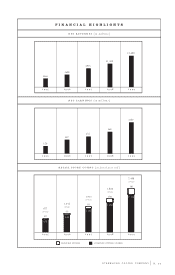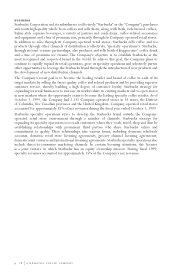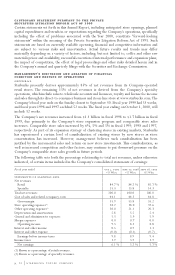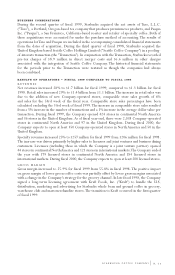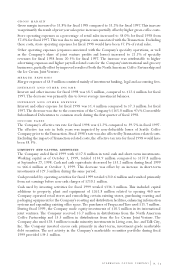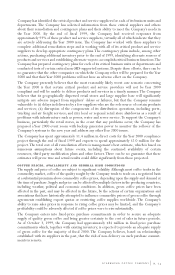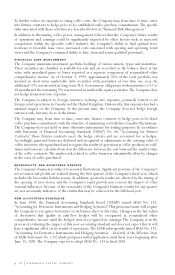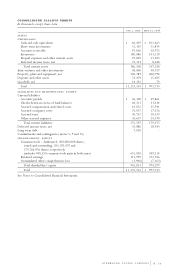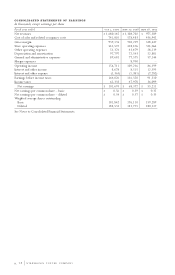Starbucks 1999 Annual Report Download - page 2
Download and view the complete annual report
Please find page 2 of the 1999 Starbucks annual report below. You can navigate through the pages in the report by either clicking on the pages listed below, or by using the keyword search tool below to find specific information within the annual report.
BUSINESS
Starbucks Corporation and its subsidiaries (collectively “Starbucks” or the “Company”) purchases
and roasts high quality whole bean coffees and sells them, along with fresh, rich-brewed coffees,
Italian-style espresso beverages, a variety of pastries and confections, coffee-related accessories
and equipment and a line of premium teas, primarily through its Company-operated retail stores.
In addition to sales through its Company-operated retail stores, Starbucks sells coffee and tea
products through other channels of distribution (collectively, “specialty operations”). Starbucks,
through its joint venture partnerships, also produces and sells bottled Frappuccino®coffee drink
and a line of premium ice creams. The Company’s objective is to establish Starbucks as the
most recognized and respected brand in the world. To achieve this goal, the Company plans to
continue to rapidly expand its retail operations, grow its specialty operations and selectively pursue
other opportunities to leverage the Starbucks brand through the introduction of new products and
the development of new distribution channels.
The Company’s retail goal is to become the leading retailer and brand of coffee in each of its
target markets by selling the finest quality coffee and related products and by providing superior
customer service, thereby building a high degree of customer loyalty. Starbucks strategy for
expanding its retail business is to increase its market share in existing markets and to open stores
in new markets where the opportunity exists to become the leading specialty coffee retailer.As of
October 3, 1999, the Company had 2,135 Company-operated stores in 34 states, the District
of Columbia, five Canadian provinces and the United Kingdom. Company-operated retail stores
accounted for approximately 85% of net revenues during the fiscal year ended October 3, 1999.
Starbucks specialty operations strive to develop the Starbucks brand outside the Company-
operated retail store environment through a number of channels. Starbucks strategy for
expanding its specialty operations is to reach customers where they work, travel, shop and dine by
establishing relationships with prominent third parties who share Starbucks values and
commitment to quality. These relationships take various forms, including domestic wholesale
accounts, domestic retail store licensing agreements, grocery channel licensing agreements,
domestic joint ventures and international licensing agreements. Starbucks specialty operations also
include direct-to-consumer marketing channels. In certain licensing situations, the licensee
is a joint venture in which Starbucks has an equity ownership interest. During fiscal 1999,
specialty revenues accounted for approximately 15% of the Company’s net revenues.
. STARBUCKS COFFEE COMPANY

